Conquering Kilimanjaro
By Jennabeth Taliaferro
Abilene native Jennabeth Taliaferro shares the story of her physical and mental training as she spent three months preparing to climb Mount Kilimanjaro in Tanzania last year.
The slope of a mountain is not a good place for self-reflection. I thought it’d be the perfect time to think about my life choices, where I wanted to live next and what I would do there. But almost at the summit of Mount Kilimanjaro, I couldn’t think of anything except the thin air that barely reached my lungs. The gravel crunched below my feet, and the incline became steeper as I focused on the pair of boots three feet in front of mine. My walking poles felt heavy in my hands and my breathing remained labored as I pushed forward. The summit would be mine in a few hours, if I didn’t quit.
Though I’d only been on the mountain for four days, my journey to the Roof of Africa began three months earlier, when a family friend asked if I would like to join her and some friends on a “girls’ trip” to climb Kilimanjaro. I had quit my full-time job a few months before and now worked part-time at a gift store. It would only take a couple weeks, so I said yes and signed up for the trip before it fully set in.
Looking at me, you wouldn’t automatically think I could scramble up a steep rock wall or hike uphill at high altitude for hours at a time. I played tennis in high school and danced on the Abilene High Eaglettes drill team my freshman year, but rarely did any exercise that was not required. An obstinate child, I told my parents I hated to sweat and maintained that credo for most of my teenage years. I’ve always had strong legs, but they’d been covered by flesh and a layer of fat since college. That had to change. Though still a little foggy on the how, I was determined to make it to the summit of Africa’s highest mountain.
I turned to my dad for advice. He climbed Kilimanjaro in the early 90s, and we discussed the training, the mountain, his experience and the altitude.
“You need to get used to being out of breath,” he told me. “Your heart needs to be accustomed to beating fast.”
Great, I thought. I still hated sweating, hated running and halfway gagged when I thought about spin classes. However, I’d just booked my plane ticket to London where I would meet the climbing group in mid-February. It was almost Thanksgiving. I had three months to get in the best shape of my life.
Mount Kilimanjaro is the highest mountain on the continent of Africa at just over 19,340 feet. It dominates the Tanzanian landscape, and brings over $20 million in tourism to the region every year. Porters and guides have climbed the mountain over one hundred times and, along with local tribes, love, respect and revere the mountain, like protective brothers of an only sister.
One reason it is so difficult to reach Kili’s summit is not because of its landscape or its five climate zones; the entire time on the mountain rarely requires much more than intense uphill hiking. The problem—similar to any mountain over 14,000 feet—is the altitude. Though the summit of Kilimanjaro is only about 1,000 feet higher than Everest Base Camp, the trip is usually completed in the very short span of a week. Outfitters, including ours, have these climbs down to a science, allowing as much acclimatization as possible. But it is still impossible to predict how each person’s body will react above a certain height.
The fittest person in the world could climb above 15,000 feet and suffer dangerous symptoms, including fluid in the lungs or brain. This prospect terrified me, but what could I do? The only thing I could: push the thought from my mind and focus on physical and mental strength to prepare me for whatever came. So, like crossing a rickety rope bridge, I began cautiously.
As a member of Hendrick Health Club on the north side of Abilene, I had access to cardio and aerobic classes such as biking and dance. My first week of training, I either attended a class or went for a run three days in a row, then rested, then another three consecutive days. It was awful. I was sore and cranky and felt muscles I forgot existed, but I knew I couldn’t give up.
At the time, I lived near Abilene Christian University, and the 1.8-mile Lunsford Trail that circles the campus became a familiar friend. I ran it most mornings if I didn’t have an exercise class in the afternoon, and some mornings even if I did. I knew its curves, hills and trees, and knew that if I only made it half way, the second half always felt shorter.
One cold December morning, about a month after signing up for the trip, I decided to run twice around the Lunsford Trail. The urge to quit after one lap was strong, but I denied myself. I kept going. Not faster, not slower, just…kept going. Almost twenty minutes later, I finished in utter pain, but felt that I had crossed the Rubicon into the next dimension of my training. Driving home to a beautiful hot shower that morning, I realized the only way to get stronger was to not let myself quit. I had to block the part of my brain that told me it hurt too much to go on.
The mental challenge was as grueling as the physical. As a result of my newfound revelation, I pushed myself further than I ever thought possible. I felt stronger on the track, more energized in classes and on the Stairmaster and able to crank up resistance on the bike. As soon as I freed myself from the thought of quitting, removed the option from the equation completely, the real training began. I was no longer subject to the negativity that pulsed through my veins each time I ran or biked.
Even with holiday parties and cocktails, my body was getting leaner. For the first time in my life, my goal was not to lose weight, but rather to gain strength and endurance for the climb. Not wanting to focus on the wrong aspect of training, I refrained from weighing myself throughout the process. It was a nice surprise, however, when my clothes began to fit better.
Another month of workouts and runs passed, and the middle of February came before I knew it. The day I left for London, I went for one more run around the ACU track. Though all the Kili training websites and books said to rest for the few days before the climb, I couldn’t fathom going almost a week without working out before attempting the hardest thing I would ever do. The Lunsford track looked the same as always. The cold air filling my lungs, I imagined myself walking onto the glacier-covered summit in pure joy. I felt nervous but peaceful and had to trust that I was ready.
Ten days later, mere feet away from the top of the highest mountain in Africa, I watched the sun rise over the horizon. Our group stopped to rest and enjoy the view. African plains stretched out so far below us that I couldn’t make out the small dots scattered across the landscape.
Up ahead I saw the green sign that would congratulate us at Uhuru Peak. A few more steps, breathing in and out, in and out, I reached out and slapped the lowest section of the sign, smiling and fighting back tears. Despite having no entitlement to be on that mountain, no right whatsoever to reach the summit, I had pushed forward until it was mine. Exhausted but relieved, I let the accomplishment sink in. I felt transformed. I’d become someone who climbs mountains.
I don’t pretend to now be an expert on physical fitness or mountain climbing. God knows I will never be the fittest fiddle in the band. What I do know is what worked for me; having a reasonable, concrete goal to strive toward made my results easier to focus on and therefore to grasp. It’s better to have an end—to picture the summit of a mountain, the finish line after a 10k, or a ski slope that you must descend—than it is to imagine some vague notion of what you should look like or what your scale should say.
Months later, after returning to my life, I sometimes forget that it happened; as if I only dreamed of raw and vivid Tanzania and the incandescent people I met. I have to remind myself that I did something so out of character for me. A friend told me later that I seemed surer of myself, more confident about my abilities. But I soon realized that if I was more confident, it wasn’t because I reached some distant peak. It’s because throughout my training process, I learned how far I can push myself, what I can handle, and where my limits are, if they exist at all.















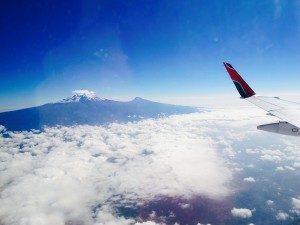










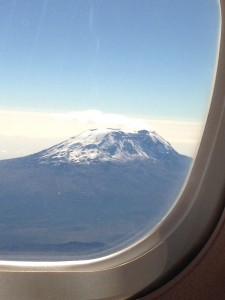
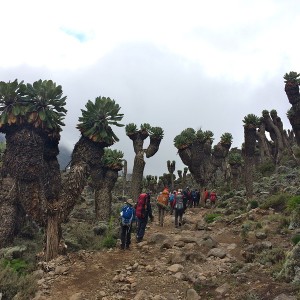
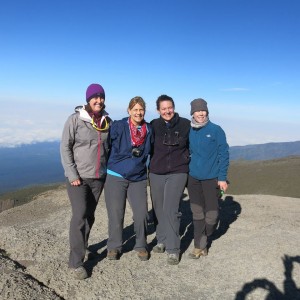
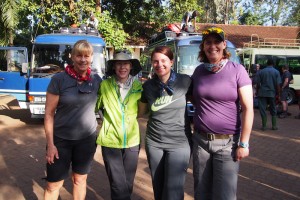
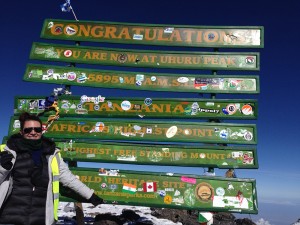
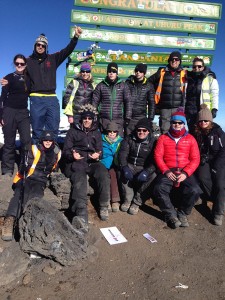
Leave a Reply